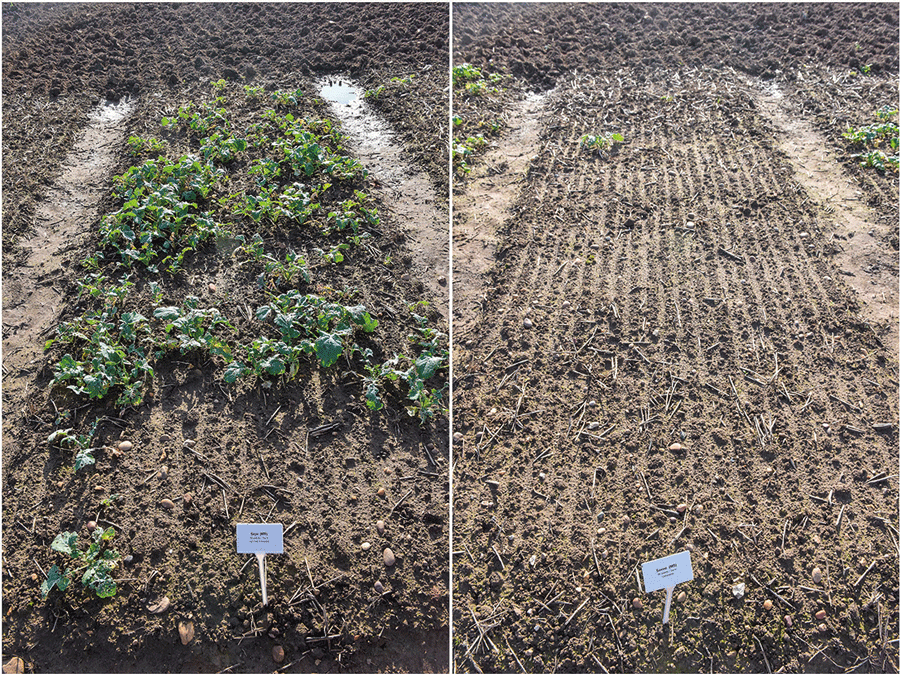New techniques to tackle hidden OSR pathogen in soil
22nd November 2019
Rhizoctonia solani in soils could result in establishment losses of more than 80 per cent in oilseed rape.
Rhizoctonia solani in soils could result in establishment losses of more than 80 per cent in oilseed rape. Plants that do survive in infected soils are likely to be less vigorous and up to 70 per cent lower yielding, according to results of the ICAROS research project at the University of Nottingham.
R. solani strain AG2-1 that affects OSR typically causes early damping off of seedlings, resulting in poor emergence and establishment, reported project lead, Dr Rumiana Ray. It also impacts on root length and lateral root development, which is especially serious in OSR that depends on a single taproot.
The £600,000 Innovate UK ICAROS project, delivered by Syngenta in association with University of Nottingham, with funding from AHDB and BBSRC, has sought to investigate the effectiveness of integrated control measures and a potential new seed treatment to manage the disease.
Successive seasons’ trials at University of Nottingham showed a 50 per cent yield loss in OSR on soils infected by R. solani AG2-1, with seed rate having only a small effect on final yield.

Rhizoctonia solani innoculated trial of OSR with seed treatment (left) versus untreated (right) at 80 seeds/m2
The trials demonstrated that the presence of AG2-1 reduced early vigour, irrespective of seed rate, trialed at 40 or 80 seeds/m2. Furthermore, GAI development of the crop was significantly reduced at both higher and lower seed rates. Use of the seed treatment increased GAI by more than 70 per cent in infected plots, reported Dr Ray.
CSFB susceptibility
Trials observations also revealed that plants subjected to rhizoctonia infection were more susceptible to cabbage stem flea beetle damage, and less able to recover from pest attack. The damage by CSFB was reduced at higher seed rate and by seed treatment in AG2-1 infected soils.
Detailed x-ray studies of oilseed rape root structures of growing plants had shown the SDHI fungicide sedaxane – included with fludioxonil and Metalaxyl-M in the three-way trial seed treatment – had been most effective in protecting against root length reduction and lateral root loss.
The research highlighted that R. solani impacts can be more severe in dry soils with high porosity, where fungal hyphae can move freely; wet or waterlogged soils typically impede fungal spread and infection, although surface disease spread could occur.
Irrespective of seed rate, the
seed treatment increased uniform crop development under high disease pressure, added Dr Ray, with yield response of up to 2t/ha depending on sowing rate and growing season conditions.
A report of soil monitoring revealed the geographical reach of AG2-1 was seen across the country, but with a greater incidence in the north of England. Furthermore,
the highest concentrations were found following oilseed rape or winter wheat and, to a lesser
extent, legumes.
The research has helped establish risk factors to assess the potential threats from R. solani AG2-1, including short rotations between oilseed rape crops or where OSR and winter wheat are grown frequently.
Syngenta UK technical manager, Michael Tait added that the consistently more even emergence seen from the seed treatment in the ICAROS trials had further benefits as the crop developed. “The effects of R. solani on OSR development has been clearly evident from the uneven flowering seen in affected crops. Effective control with seed treatment enables more precise agronomy timing throughout the season, along with more even maturity at harvest,” he advised.
